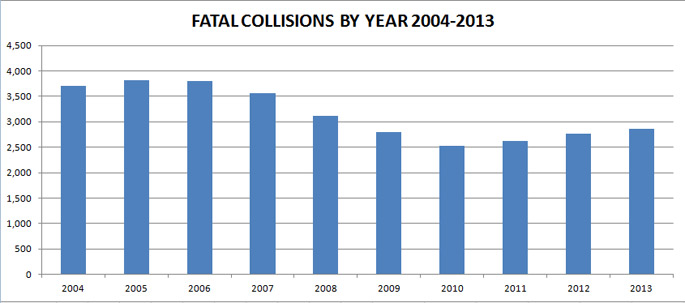Laws on Use of Cell Phones
California law prohibits any driver from using a handheld mobile phone or device while driving. Drivers under the age of 18 in California are considered novices, and as such are prohibited from any use of cell phones while driving, handheld or not.
Since the law does not permit the use of handheld cell phones while driving, these are the remaining options:
- While driving simply abstain from using your cell phone
- Put your cell phone on speaker mode
- Rely on a Bluetooth wireless earpiece
- Wear a wired headset attached to your phone
- Have a car kit and mount installed
The restrictions laid down by California law in 2007 that took effect in 2008 are now making drivers think twice about picking up their cell phone while driving.
In April 2015, law enforcement across the state of California began a major crackdown on the use of cell phones while driving. As a result 55,000 tickets were written, which is 5% fewer than the number written in 2013 during a similar crackdown.
In 2013 there were a total of 426,000 violations of the cell phone law, which is substantially lower than 476,000 citations written two years prior, when the number was at it’s peak.
Since then authorities have been dealing with a new problem, drivers are now texting while behind the wheel. This past year there were 27,000 drivers who were ticketed for this, a nearly ten-fold increase from 2009 when the total was 2,800.
Have Traffic Accident Injuries been Reduced Due to the Ban?
The University of California at Berkeley did a study on the effects of the ban on using cell phones while driving. They released the results in March 2012, which analyzed traffic accidents in California throughout the first four years that the ban had been in effect.
The study revealed that (1) the number of deaths from traffic accidents had dropped by 22%, (2) the number of deaths as a result of drivers holding a cell phone went down by 47%, plus (3) the number of deaths of drivers who were using a hands-free cell phone went down similarly. The study also showed a similar reduction in the amount of physical injuries. Just as important, the study revealed that the ban on the use of handheld cell phones while driving had resulted in drivers using their cell phones less often.
Notes on Distracted Drivers in 2015
A woman from San Diego was convicted of killing another woman while driving on the freeway distracted. The judge imposed a six-year prison sentence for the crime. Evidence introduced by the state showed that Joreno Ypano Nicolas texted more than a dozen messages while driving and was also talking on her cell phone prior to smashing her vehicle into a stopped car, resulting in the death of Deanna Mauer. Nichols was pronounced guilty of the crime of gross vehicular manslaughter on August 13th and heard her sentence on September 4th.
During the crackdown in April, which was designated Distracted Driving Awareness Month, there were approximately 250 agencies of law enforcement throughout California that wrote more than 46,000 tickets for drivers who were caught driving while using their cell phone, which was about twice the amount of tickets written in an average month across the state.
If you look at the figures in the charts below you can clearly see that fatalities dropped from a total of 3,793 in 2007 to 3,113 in 2008 when the ban first went into effect in California. That is a drop of 680, which represents how many lives were most likely saved by the law. The results of the study show that the number of fatalities continued to drop until 2010, which recorded 2,520 fatalities. However, the figures show that fatalities started to rise again, with 2,853 in 2013. This may reflect the increasing problem with drivers texting behind the wheel. It is clear that much more work needs to be done.

At O’Connor, Runckel & O’Malley LLP we have 50 years of combined litigation and trial experience. We have the expertise and a proven track record of success. If you or a loved one has been the victim of the negligence of someone illegally using a cell phone while driving, please Contact Us. We are here to answer your questions and discuss how to protect your legal rights.
Published on behalf of O’Connor, Runckel & O’Malley LLP

